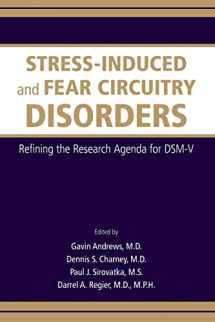
Stress-induced and Fear Circuitry Disorders: Refining the Research Agenda for DSM-V
Book details
Summary
Description
This volume summarizes current research to determine whether a specific group of stress-induced and fear-based disorders form a distinct syndrome independent from other anxiety disorders. Intended to contribute to DSM-V revisions regarding classification of these disorders, Stress-Induced and Fear Circuitry Disorders reflects findings that may lead to more refined treatments for these conditions based on a better understanding of the biological and environmental factors that contribute to their development. Thirty international authorities clarify how these disorders develop and what factors contribute to symptomatology. Focusing on posttraumatic stress disorder, panic disorder and agoraphobia, social phobia, and specific phobia, the authors explore the possibility of linking the classification and etiology of these conditions by showing that they may be closely related in terms of brain pathophysiology. Specific coverage ranges from consideration of the disorders among minorities to the effects of stress and psychosocial factors, to the contribution of substance abuse. By offering important new ways of thinking about these disorders, the book not only allows researchers to more accurately assess these diagnostic classifications but also can help clinicians more effectively communicate with patients regarding the nature of their illness and its treatment.


We would LOVE it if you could help us and other readers by reviewing the book
Book review



